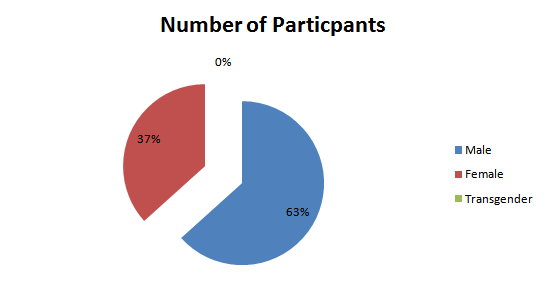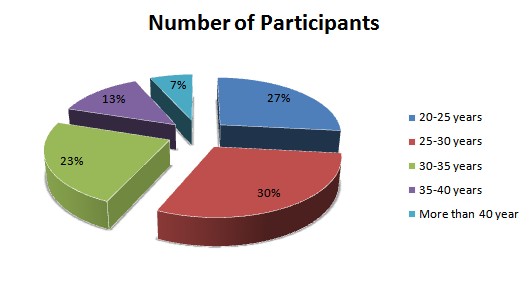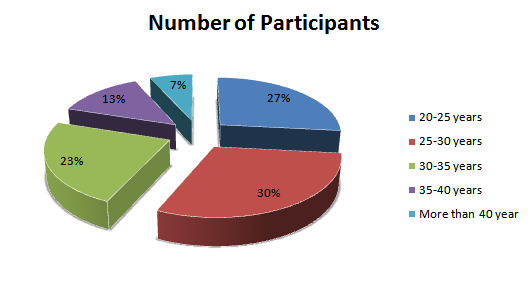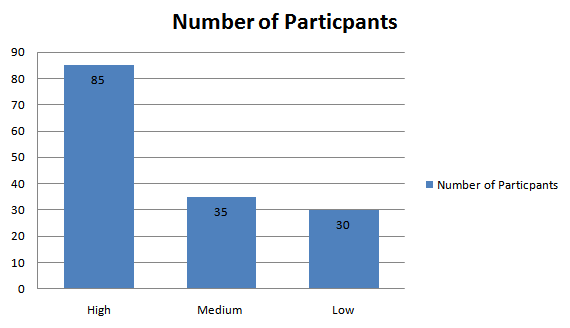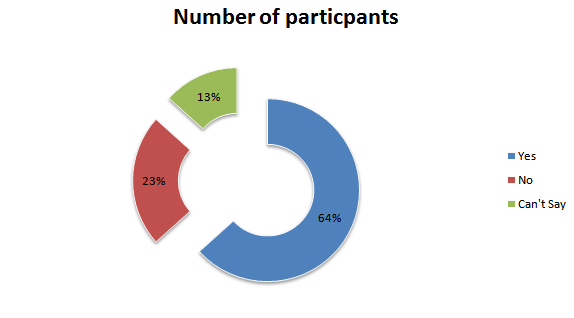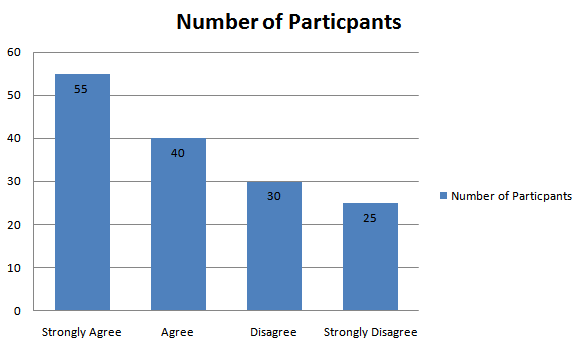Organizational Problems Related To Transportation Sector Causing Traffic Congestion Sample
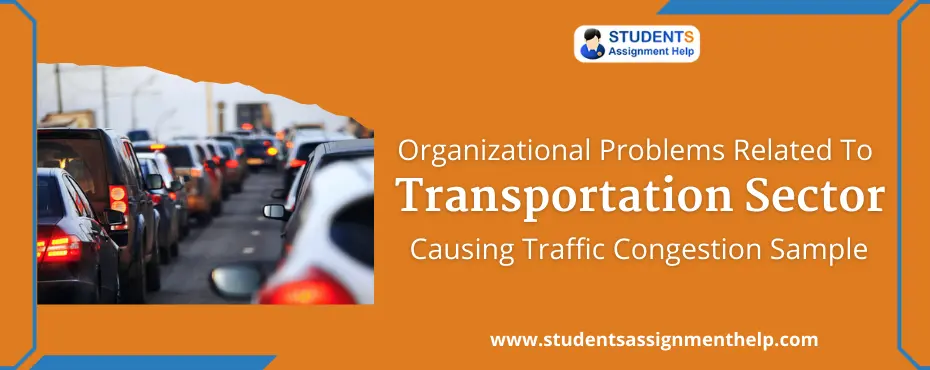
Introduction
Traffic congestion is a major problem in big cities like Sydney. The research highlights various corporate problems in the transport sector, which can cause traffic congestion. Increment of household vehicles, road blockage, and air pollution are some major reasons for traffic congestion. Certain hypotheses and questions are developed to execute the research logically and systematically.
Data regarding the research are collected ethically from the local population of Sydney and experimental research is followed to execute the research. Furthermore, SPSS and excel tools are used to analyze and internet gathered data, which helps to generate effective outcomes of the research. The research is very beneficial to reduce traffic congestion issues and can be applied to resolve real-time traffic issues.
Topic
The topic chosen is “organizational problems related to the transportation sector causing traffic congestion”. Traffic congestions arise to the arrival of maximum vehicles in roadways at a time. Such issues can delay delivery and increase operational costs, which eventually reduces the profitability of organizations. More than 45% of the citizens of Sydney use motor vehicles, which increases traffic congestion issues. The research on this topic will help to investigate the core issues and thereby possible solutions could be developed.
Rationale
Traffic congestion is an emerging issue in Sydney that can cause corporate problems like delivery delay, ineffective inventory management, and customer dissatisfaction. The research study explores the core reasons of congested traffic, which can help to overcome corporate issues linked with traffic congestion by building efficient traffic control plans. Thus, the research will help to decrease pollution and other issues and benefit Sydney. Therefore, the topic is chosen for research.
Focus questions
Various questions have been formed, which are described below.
- What are the various factors that cause traffic congestion and impact organizations?
- Can strategic planning in SCM overcome the traffic congestion issues and avoid the delays?
- How active engagement of organizations as well as government can reduce traffic congestion?
- What strategies should be adapted to improve traffic infrastructure and transportation policies to diminish organizational troubles?
Flexible Rates Compatible With Everyone’s Budget
Hire a Professional Essay & Assignment Writer for completing your Academic Assessments
Hypotheses
The hypothesis developed is described below.
- H0: Strategic implementation of SCM policies and traffic rules can decrease congestion problems.
- H1: Developing a proficient SCM plan could decrease traffic overload in Sydney.
- H2: Collaborating with supply vendors and monitoring the overall operation can decrease the traffic issues?
Research plan
Both qualitative and quantitative research approach is used along with experimental design. A sample size of 100 employees is selected from local organizations to gather their perceptions regarding the problem. The sample size selected is not huge as well as not too small, which helps to analyze their perceptions easily (Thy, Asano & Finlayson, 2015). Moreover, the stratification technique is used to eliminate sampling errors, which ensures accurate sampling.
Primary data is gathered from the respondents selected with the sample. The respondents include inventory managers and employees, who can enlighten various corporate issues that cause traffic congestion. Effective questionnaires are designed to conduct surveys and interviews, which focused on the perception of the respondents are accumulated. However, gathered primary data can include a wide range of perceptions, which might be irrelevant to the core research. Such confusing data are removed to avoid research failure. Besides, financial journals, reports, and magazines are examined for secondary data (Terrill et al., 2017).
Qualitative research helps to review the literature accurately and identify certain outcomes. An overall plan is developed by setting research goals, data collocation methods and validating data collection tools. Finally, SPSS and Microsoft Excel is used for evaluating data and interpreting the outcomes of the study. Thus, developing an accurate research plan helps to obtain a proficient result.
Benefits of the research
This research will be highly advantageous to manage and reduce various corporate problems, especially SCM activities, which can cause improper traffic conditions and congestion in Sydney. Besides, the research will help to develop and implement certain traffic control strategies, which can reduce air pollution and road blockage problems also.
Research assumptions
Assumptions are certain concepts or things that are accepted to be true. The research is assumed to be ethical and will help Sydney based organizations to overcome the barriers related to traffic congestion. The gathered data will be ethical and demonstrate key aspects of SCM activities and other transportation activities performed by organizations. Thus, the research study will draw the issue clearly, which can help to develop efficient solutions. Violating research assumptions could lead to improper results.
Research Limitation
Sufficient funding was not available to conduct thorough research, which is the key limitation. Therefore, various authentic journals and magazines were also not collected, which could have offered more clarity on the topic. Further, due to a lack of sufficient funds, a high-quality analytical tool could not be purchased, which affected the research. Besides, only 100 participants were involved in the research for a very small period and therefore effective findings could not be accumulated. Further, the lack of human resources is also another problem.
Methodology
An experimental or causal research design is used to perform the research. On the other hand, quantitative as well as qualitative methods of research are applied to obtain data and analyze them. A descriptive study is avoided as it takes significant time for obtaining data and could create confusion in research findings (Mahut, Florian, & Florian, 2016).
Further, respondents are asked close-ended as well as open-ended questionnaires, which helped to obtain a strong perception regarding the research topic. Besides, secondary data is collected from corporate journals, financial reports, and business magazines.
Some newspapers and unpublished articles are also used for gathering data. Such a wide verity of sources helped to realize the different issues from the organizational perspective (Daas et al., 2015). On the other hand, how such challenges can cause traffic problems are also explained. Various inventory managers from large organizations of Sydney are interviewed.
Besides, the survey is performed on the employees from the chosen companies, where specific options were given to answer the questions. The interviews and surveys are done within a 21 day period. The key survey questions investigate the strategies these companies follow to tackle traffic congestion delays.
Besides, whether the wages and performance are affected or not due to traffic congestion is also asked in the survey. The sample size is chosen carefully by including experienced managers and employees. However, the public is not included as they could not offer valuable perceptions regarding organizational issues (Anderson, Kelley & Maxwell, 2017).
Five managers and 100 employees are chosen in the research sample, which can offer consolidated ideas regarding corporate issues related to traffic congestion. The probability sampling technique is used for selecting an efficient sample. The perceptions or data acquired from the participants and literature are not manipulated for the benefit of research, which helped to execute the research ethically.
Both qualitative and quantitative research is used to obtain conclusive evidence to execute the research. Besides, the use of both methodologies helped to gather subjective interpretation of the topic as well as statistical analysis of organizational issues. Precise statistical presentation of data helped to comprehend the issues conveniently. Broad range (open-ended) questions aided the research to gather descriptive views regarding corporate issues.
Further, participants are offered a comfortable environment so that they can explain their views clearly during interviews (Dunn et al., 2015). Meanwhile, a broad range of literature helped to gather information regarding several issues of organizations that could generate traffic problems. However, the secondary sources displaying confusing data are not included in the research. Thus, research is done according to the plan and obtained the objectives.
Buy high-quality essays & assignment writing as per particular university, high school or college by UK, USA & Australian Writers
Review of Literature
Congested traffic is a major issue in urban cities. Mostly it happens due to small lanes and a high amount of vehicles in the road lanes. Like other large cities, the city of Sydney is also regularly being hampered due to excessive traffic in the roadways. The issue is rising at a rapid rate due to a lack of planning and increment in personal vehicles (Wang, Wan & Yuan, 2018). Organizations use these roadways to transport their goods and cargos even in the day time.
However, such large vehicles could not pass easily if other vehicles are present on the road. Such circumstances increase traffic, which could eventually delay everyone.
In most cases, such congestion could prohibit the companies to deliver cargo in time, which affects their value in the market. Thus, commercial organizations and their SCM chains get heavily affected by traffic congestions. According to a survey done by ABC News, Sydney is the most crowded city in Australia. Apart from delivery trucks, various other factors are also causing traffic jams or congestion in the road (ABC News, 2019).
Sometimes people or organizations perform roadside shows or concerts by blocking the road, which is a major issue of jam. In such situations usually, vehicles chose alternate routes or moves slowly to reach the destination. Such activities involve using excessive fuel and significant loss of time, which could increase operating costs and decrease profit for the firms. It is reported that Australian businesses spend around 3.5 billion dollars due to such traffic congestion (Kong et al. 2018). Further, such delays can also increase customer dissatisfaction.
Various strategies can be used to avoid such conditions. For example, the firm can use automated systems to monitor the traffic situation, which also helps to divert route or guide the drivers to take the nearest possible routes. Besides, the government can expand the road width and implement a toll system to control traffic. However, SCM vendors and organizations can also observe the regular routes and pick the time of congestion. Thus, they can change their delivery timing which would help to avoid excessive traffic.
Moreover, it is suggested to use certain transportation theories to manage traffic, which is integrative, consumptive, and productive (Bohmert & DeMaris 2018). Applying accurate theories will help to minimize transport issues. The consumptive function can be used to improve bus services. The productive function can be used to enforce road pricing or toll taxes, which helps to resolve and avoid blockage issues. An integrative function can be applied to manage workplace parking issues.
Moreover, traffic flow theory can be used to control the speed limit and flow of traffic in the roadways (Cattaruzza et al., 2017). Intelligent Transportation System implements this theory to maintain the density of traffic, which also involves various CCTV installations and proficient monitoring.
Besides, Australian organizations can relocate their warehouse from urban areas to avoid traffic congestion problems. Thus, traffic jams can also be reduced within the city area. However, rescheduling strategy is the most effective technique to avoid peak traffic hours. Organizations can develop adequate delivery and distribution plan by observing the regular traffic pattern in the city area. Identifying the traffic pattern can help to save time and money. Moreover, highlighting the corporate parking zone, and residential parking areas will help to avoid unnecessary traffic on the road (Caldwell et al., 2017).
Apart from this, the avoidance strategy can be adapted, which is done by identifying and avoiding congested roads. Further, the Australian government and transport authorities can implement the Urban Traffic Management Control (UTMC) system that can be enforced to handle congested roadways and avoid roadblock conditions (Milanés et al., 2010).
Areas of research innovation
The researcher could use online articles and journals related to the Australian organization and traffic conditions to enhance the clarity of the topic. Besides, increasing the sample size could increase the collection of data for research, which would have helped to develop expand statistical data. Further, the survey questions could have been shared through the mail and other virtual communication tools, which can save cost and time.
Besides, the research could be focused on transport sector employees. Such tactics will help to grasp the organization’s issues more clearly. Besides, the research could focus on the perception of organizational leaders to tackle traffic conditions. Perhaps, government statistics can also be used to observe the traffic issues. Such a research policy could enhance the proficiency of the result.
Research Significance
The research has great significance in reducing traffic issues in urban area. Besides, organizations can be directly benefitted by using the outcomes of the research. Firms located in Sydney can alter their SCM plan using rescheduling strategy or they can reallocate the warehouse ort outer city limits to avoid congested traffic.
Besides, they can use maps and AI to select free lanes, which help to avoid traffic. Further, Australian authorities can also implement a smart transport system and toll tax policy to control vehicles. Thus, the research will benefit the government as well as organizations to avoid traffic and increase profitability.
Methods of Data Analysis
The research project has been conducted between 200 people working in several organizations to understand the research topic of organizational problems related to the transportation sector causing traffic congestion. The help of various interviews and sending questionnaires to the participants within the specified time has collected all the data.
However, within the 200 people, the data which has been collected is not accurate. That is why the researcher has excluded a few of the data from the research. 20 of the data are not completed and rest 30 have some mistakes in it. Therefore, the total number of data, which has been evaluated in the research, is 150.
Quantitative Data Analysis:
What is your gender?
Based on the above chart it can be stated that the number of participants who are around participating in research is 63% and the female participants of the research are around 36%. Therefore, the majority of the participants are male.
What is your age?
| Choice of answer | No. of people responded | Total number of people participated | Percentage of the people who responded |
| 20-25 years | 40 | 150 | 27% |
| 25-30 years | 45 | 150 | 30% |
| 30-35 years | 35 | 150 | 23% |
| 35-40 years | 20 | 150 | 13% |
| More than 40 year | 10 | 150 | 7% |
According to the data, which has been provided on the above graph shows that 27% of the people are in the age group of 20-25 years, 30% are in the group of 25-30 years, 23% of the people are in the age group of 30-35 years. Apart from that, 13% of the people are from 35-40 and the rest 7% are in the age group of above 40 years.
How severe is the issue of traffic congestion for the organization?
| Choice of answer | No. of people responded | Total number of people participated | Percentage of the people who responded |
| Very High | 25 | 150 | 27% |
| High | 55 | 150 | 30% |
| Neutral | 25 | 150 | 23% |
| Low | 40 | 150 | 13% |
| Very Low | 05 | 150 | 7% |
Based on the above chart it can be stated that 17% of the participants believe the issue of traffic congestion is very high for the organizations, 36% believe it is a highly severe issue, 17% are neutral on these issues. Apart from that 27 percent believe that the issue is not that severe and 3% of the people believe it is very low.
How much the urban cities are affected due to the problems related with traffic congestion?
| Choice of answer | No. of people responded | Total number of people participated |
| High | 85 | 150 |
| Medium | 35 | 150 |
| Low | 30 | 150 |
According to the above data, it can be stated that 85 number of participants show that urban cities are highly affected by traffic congestions. Moreover, 35 responded said that the effect of the traffic congestion is medium and 30 responded said is low affected.
Do you feel that customer satisfaction can be maintained by dealing with the challenges related to traffic congestions?
As per the chart, it can understand that 64% of the respondents believe that customer satisfaction can be maintained by addressing the challenges related to traffic congestions. However, 23% of the respondents believe the customer satisfaction cannot be maintained by addressing traffic congestion issues. Moreover, 13% of the respondents does not able to provide better answers.
The productivity of the companies gets affected due to problems of traffic congestions.
| Choice of answer | No. of people responded | Total number of people participated |
| Strongly Agree | 55 | 150 |
| Agree | 40 | 150 |
| Disagree | 30 | 150 |
| Strongly Disagree | 25 | 150 |
According to the graph, it can be stated that 55 numbers of participants strongly agree with the statement mentioned above. Moreover, 40 participants are agreeing with all the statements “that the productivity of the company gets affected by the traffic congestions”. Moreover, there are some participants does not agree with the statement they are around 55.
Qualitative Data Analysis:
Do you believe that some of the companies do the traffic congestions knowingly?
On this question, the respondents said that some of the companies do use big trucks and other types of vehicles on day time which affects the speed of traffic and it makes congested. Moreover, they believe that most of the things companies know very well, however, due to the pressure from their customers and the demand of the market allows them to do so.
Do you think the organization’s pricing policies get affected due to traffic congestions?
On this question, the respondent provided his answer positively. They said that the organization wants to provide better products at lower prices. The companies include the transportation cost for their shipment products. If the vehicles are stuck in traffic, they are required to use more fuels, which increase the cost of transportation. Thus, the organization’s pricing strategy gets affected.
Conclusion
All the data, which has been collected from various sources, helped the researcher to understand the research topic. After the analysis of the data, it can be stated that the congestion of traffic is one of the issues, which affects the organizations.
After analyzing, the various data gathered from the respondents it can be said that the issues, which emerge in the organizations related to the traffic congestions, can affect the customer satisfaction as it can affect the pricing of their products. In a city like Sydney that is one of the major cities in Australia, traffic congestion can affect the companies to deliver their products.
Stuck with a lot of homework assignments and feeling stressed ?
Take professional academic assistance & Get 100% Plagiarism free papers
References
ABC News. (2019). If you think the traffic is getting worse near you, here’s the proof. [online] Available at: https://www.abc.net.au/news/2018-10-15/traffic-congestion-australian-automobile-association-report/10376444 [Accessed 29 Aug. 2019].
Anderson, S. F., Kelley, K., & Maxwell, S. E. (2017). Sample-size planning for more accurate statistical power: A method adjusting sample effect sizes for publication bias and uncertainty. Psychological science, 28(11), 1547-1562.
Bohmert, M. N., & DeMaris, A. (2018). Cumulative disadvantage and the role of transportation in community supervision. Crime & Delinquency, 64(8), 1033-1056. Available at:https://journals.sagepub.com/doi/pdf/10.1177/0011128716686344[Accessed 27 August 2019]
Caldwell, N.D., Roehrich, J.K. & George, G., 2017. Social value creation and relational coordination in public‐private collaborations. Journal of Management Studies, 54(6), pp.906-928. Available at:https://onlinelibrary.wiley.com/doi/pdf/10.1111/joms.12268[Accessed 28 August 2019]
Cattaruzza, D., Absi, N., Feillet, D. & González-Feliu, J., 2017. Vehicle routing problems for city logistics. EURO Journal on Transportation and Logistics, 6(1), pp.51-79.Available at:https://www.researchgate.net/profile/Jesus_Gonzalez-Feliu/publication/270650038_Vehicle_Routing_Problems_for_City_Logistics/links/59c82c0c0f7e9bd2c0146b98/Vehicle-Routing-Problems-for-City-Logistics.pdf[Accessed 27 August 2019]
Daas, P. J., Puts, M. J., Buelens, B., & van den Hurk, P. A. (2015). Big data as a source for official statistics. Journal of Official Statistics, 31(2), 249-262.
Dunn, S. L., Arslanian-Engoren, C., DeKoekkoek, T., Jadack, R., & Scott, L. D. (2015). Secondary data analysis as an efficient and effective approach to nursing research. Western journal of nursing research, 37(10), 1295-1307.
Kong, X., Xia, F., Ning, Z., Rahim, A., Cai, Y., Gao, Z. & Ma, J., 2018. Mobility dataset generation for vehicular social networks based on floating car data. IEEE Transactions on Vehicular Technology, 67(5), 3874-3886. Available at:http://thealphalab.org/papers/Mobility%20Dataset%20Generation%20for%20Vehicular%20Social%20Networks%20Based%20on%20Floating%20Car%20Data.pdf[Accessed 28 August 2019]
Mahut, M., Florian, M., & Florian, D. (2016). A new adaptive, multi-scale traffic simulation. In the Australian Institute of Traffic Planning and Management (AITPM) National Conference, 2016, Sydney, New South Wales, Australia.
Milanés, V., Godoy, J., Villagrá, J., & Pérez, J. (2010). Automated on-ramp merging system for congested traffic situations. IEEE Transactions on Intelligent Transportation Systems, 12(2), 500-508.
Terrill, M., Batrouney, H., Etherington, S., & Parsonage, H. (2017). Stuck in traffic? Road congestion in Sydney and Melbourne (No. 2017-10).
Thy, M., Asano, M. & Finlayson, M. (2015). Combining Qualitative and Quantitative Data Collection and Analysis Methods in Understanding Multiple Sclerosis Fatigue Management. International Journal of Qualitative Methods, [online] 14(2), 53-68. Available at: https://journals.sagepub.com/doi/10.1177/160940691501400206 [Accessed 9 Sep. 2019].
Wang, Q., Wan, J., & Yuan, Y. (2018). Locality constraint distance metric learning for traffic congestion detection. Pattern Recognition, 75, 272-281. Available at:https://crabwq.github.io/pdf/2018%20Locality%20Constraint%20Distance%20Metric%20Learning%20for%20Traffic%20Congestion%20Detection.pdf[Accessed 27 August 2019]

